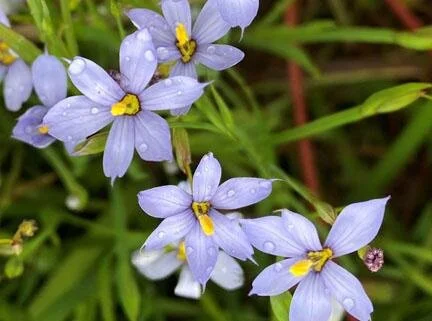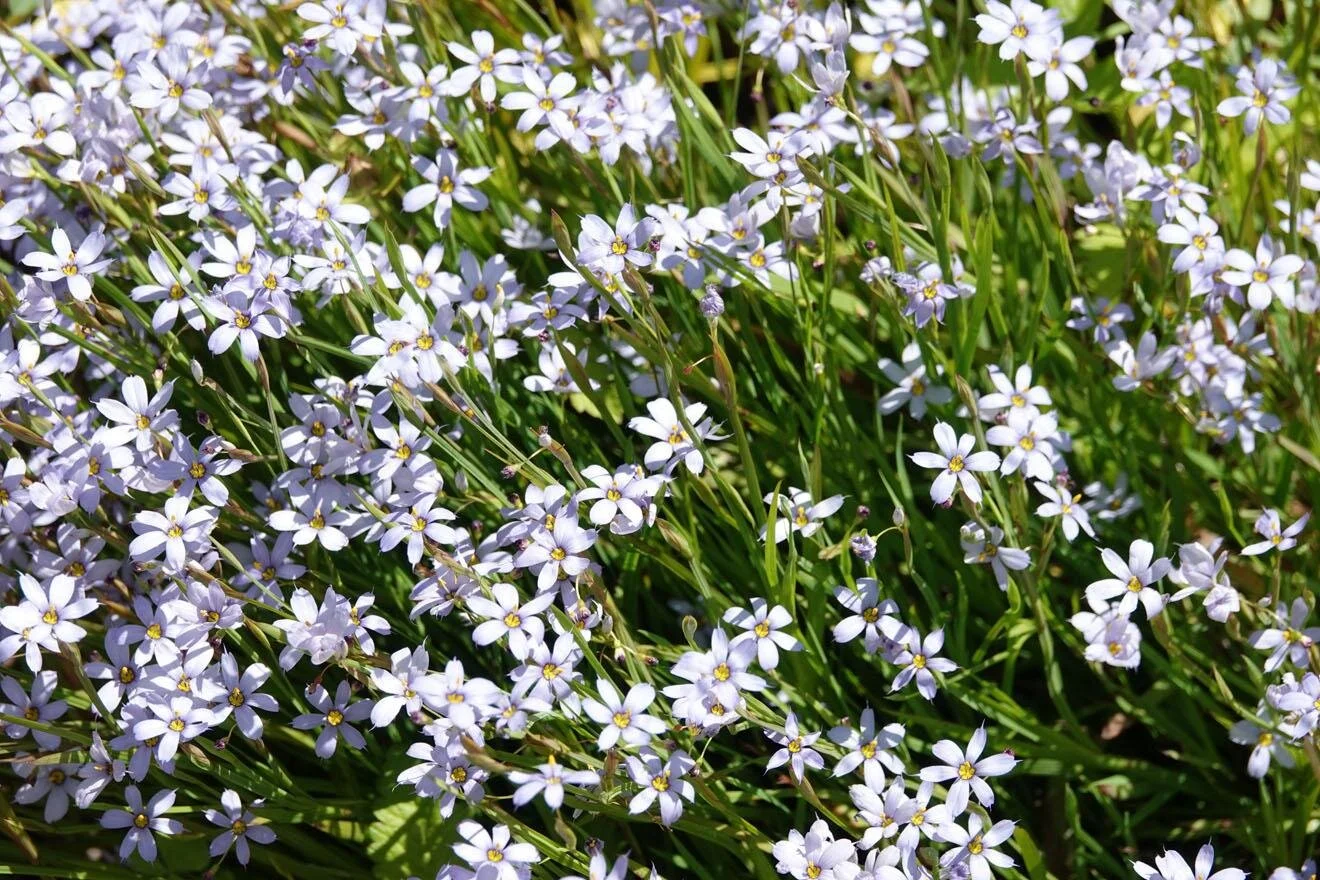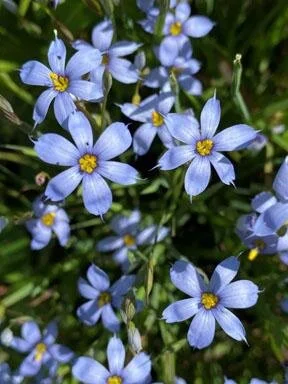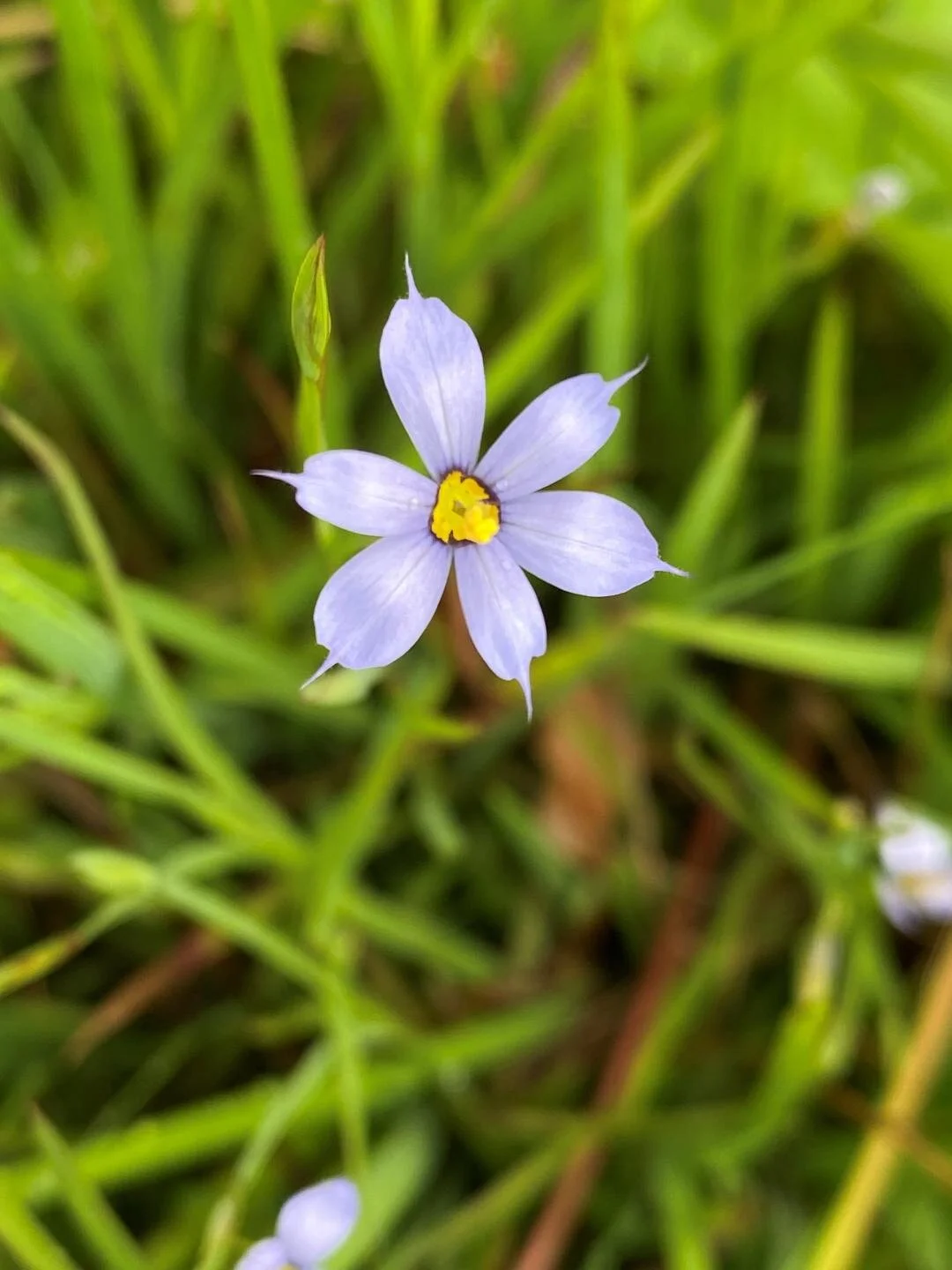Plant of the Month May 2021: Narrow-leaved Blue-eyed Grass
All Photos by Betsy Washington
Exquisite flowers Narrow-leaved Blue-eyed Grass
Narrow-leaved Blue-eyed Grass is a lovely small perennial typically reaching only 6 – 12” high and wide but in late spring it lights up the landscape wherever it grows. This is a “grass” only in name as it is a member of the Iris family, with linear, flattened grass-like foliage that grows in dense, tufted clumps from rhizomes. The green flowering stems are distinctively flattened and broadly winged and actually photosynthesize along with the leaves. Each stem is branched and rises above the grassy foliage. Blue-eyed Grass grows naturally in low woods, along river and streambanks, seeps, damp meadows, and moist roadsides.
Dense tufts of showy flowers of Narrow-leaved Blue-eyed Grass
From the beginning of May into June narrow-leaved Blue-eyed Grass blooms profusely and the low mounds are often completely covered with small true-blue to lavender blue starry flowers. Each flower emerges from a pair of leaf-like bracts at the top of branched stems and opens fully during the day when the sun is shining, only to close from dusk to dawn to preserve the nectar and pollen for when pollinators are out. The flowers are less than one inch wide but are borne so densely that the effect is extremely showy. Each flower has 6 pointed tepals that are contracted into a sharp fine point with a bristle at the tip and surround a bright yellow eye with dark purplish margin and bright golden anthers rising above the eye (colorful petals and sepals when nearly indistinguishable are called tepals). Each tiny flower is exquisite and well worth looking at closely - it is a tiny work of nature’s art in itself. The fruit is a small round capsule that splits open to release 2 or more seeds in summer.
Narrow-leaved Blue-eyed Grass is easy to grow in moist but well drained soils in full sun or part shade. It prefers moist soil but is adaptable to a variety of soils if not too dry. It makes a delightful low plant for the front of borders, along paths, or edging a garden, but is also at home in a cottage garden or naturalized along paths, woodland edges, or in meadows. It can self-sow a bit and if allowed to self-seed, it makes a delightful low perennial for naturalizing anywhere but it is easy to shear back after bloom to keep it tidy and prevent seeding in more formal settings. While usually considered a short-lived perennial, it is best divided every 2 or 3 years to keep the plants vigorous. It also makes a lovely cut flower and the dense tufts of grassy foliage remain handsome throughout the growing season adding to its charm.
Flower Bunch, Blue-eyed Grass
The profuse blooms of Narrow-leaved Blue-eyed grass attract a variety of pollinators including sweat bees, bumble bees, bee flies, and syrphid flies as well as spring butterflies such as the lovely blue Azures. Their seeds provide food for songbirds. Native Americans cooked and ate the spring greens and used the plant medicinally “to regulate” the bowels and treat diarrhea, and made a plant tea to treat stomach aches, but it seems far too lovely to eat!
Add this lovely spring bloomer to your garden and enjoy the exquisite small but profuse showy blooms for a month or more in late spring into summer. As a bonus it often reblooms a bit in late summer or fall.
Single Flower of Blue-eyed Grass




